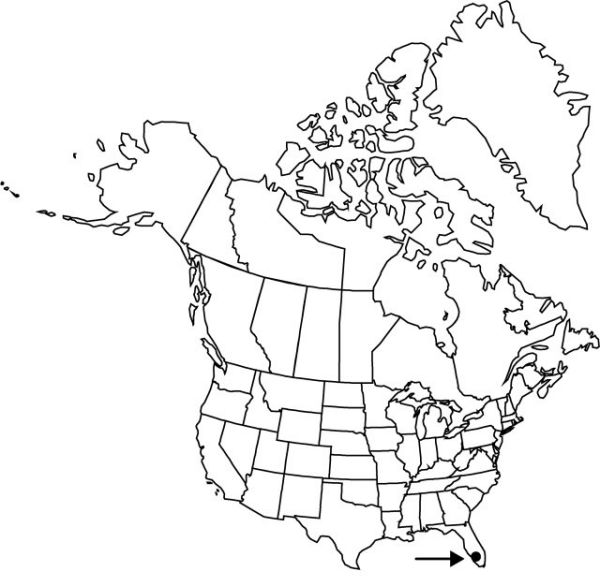Habenaria distans
Cat. Pl. Cub., 270. 1866.
Plants terrestrial, erect, 14–33 cm. Leaves in basal rosette, abruptly reduced to bracts along stem; blade wide-spreading, often lying on soil surface, broadly elliptic to ovate or obovate, 6–15 × 2–5 cm. Inflorescences: floral bracts ascending to appressed, lance-acuminate, 10–25 × 3–7 mm. Flowers ascending, not showy; sepals greenish; dorsal sepal descending-reflexed, concave, 5–9 × 4–6 mm; lateral sepals descending-reflexed, 5–10 × 2–3 mm; petals greenish, lamina ascending, falcate, 6–9 × 1 mm, lateral lobe spreading, filiform, ± equal to petal; lip greenish, middle lobe descending, linear, 7–11 × 1 mm, lateral lobes ascending-spreading, filiform, 8–15 mm; spur slenderly club-shaped, 10–17 mm; ovaries 10–15 mm. Capsules on short pedicels, nearly erect, 1–1.5 cm × 5 mm.
Phenology: Flowering Aug–Sep.
Habitat: Dense, moist hardwood forests
Elevation: 0–10 m
Distribution

Fla., Mexico, West Indies, Central America, South America (Venezuela).
Discussion
Selected References
None.